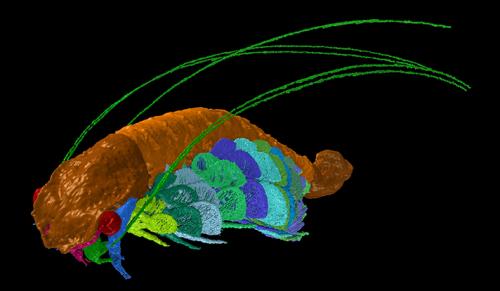
Scientists at Yale and in England are honoring renowned naturalist and TV documentarian Sir David Attenborough with his own proto-shrimp.
In this case, it is a 430-million-year-old crustacean fossil named in Attenborough’s honor. The extinct creature is new to the scientific community and is a distant relative of today’s lobsters, crabs, and shrimp. Researchers described the new fossil as “exceptionally well-preserved in three dimensions,” complete with the soft parts of the animal, such as legs, eyes, and antennae.
Attenborough, 90, is a distinguished broadcaster whose “Life on Earth” and other documentary series stand as a comprehensive study of animal and plant life on the planet. He was knighted in 1985 and has received dozens of awards and honorary degrees in recognition of his work.
In 2016, the Yale Peabody Museum of Natural History awarded Attenborough the Addison Emery Verrill Medal, the highest honor bestowed by the curators of the museum, as part of the celebrations marking the 150th anniversary of the museum’s founding.
In 2016, Sir David Attenborough received the Addison Emery Verrill Medal, the highest honor bestowed by the Yale Peabody Museum of Natural History.In 2016, Sir David Attenborough received the Addison Emery Verrill Medal, the highest honor bestowed by the Yale Peabody Museum of Natural History.Derek Briggs, Yale’s G. Evelyn Hutchinson Professor of Geology and Geophysics and curator at the Yale Peabody Museum of Natural History, said, “It is wonderful to be able to name a remarkable fossil from the United Kingdom in honor of Sir David, who has done so much to promote the conservation of the Earth’s biodiversity.” Briggs is co-author of a paper about the new crustacean fossil in the journal Proceedings of the Royal Society